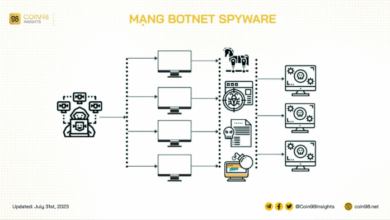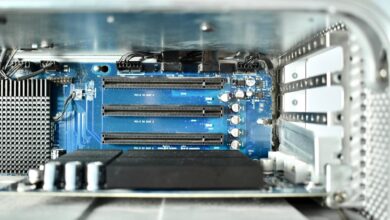Whats Good About Computer Viruses?
Whats good about computer viruses – What’s good about computer viruses? It seems like an oxymoron, right? But delve into the complexities of these self-replicating programs, and you might uncover surprising truths. From unexpected benefits in research to unintended positive consequences, we’ll explore the often-overlooked potential of these digital entities.
This exploration examines the nature of computer viruses, delving into their mechanisms and characteristics. While primarily known for causing harm, there are instances where their actions, albeit unintended, have resulted in positive outcomes. We’ll also investigate the common misconceptions surrounding viruses and analyze specific cases to understand their intended and actual impacts.
Understanding the Nature of Viruses
Computer viruses, a pervasive threat in the digital landscape, are insidious programs designed to replicate and spread, often causing harm to systems and data. Their ability to self-propagate makes them a significant concern for users and organizations alike. Understanding their nature, behavior, and methods of propagation is crucial for effective defense and mitigation.Viruses are self-replicating programs that attach themselves to legitimate files or programs, often without the user’s knowledge.
This parasitic nature allows them to spread rapidly across networks and systems, potentially causing widespread damage. They exploit vulnerabilities in software and operating systems to achieve their goals, and this is a significant factor in their continued effectiveness.
Defining Computer Viruses
Computer viruses are self-replicating programs that modify other programs or files to include a copy of themselves. This self-replication is the defining characteristic that distinguishes them from other types of malicious software. They often rely on human interaction or system vulnerabilities for propagation. The act of infection can lead to various negative consequences, including data loss, system instability, and security breaches.
Types of Computer Viruses
There are numerous types of computer viruses, each with unique characteristics and methods of attack. Some common types include file infectors, boot sector viruses, macro viruses, and script viruses. Understanding these different categories allows for a more targeted approach to prevention and remediation.
- File infectors: These viruses infect executable files, typically .exe or .com files. They modify the host program, inserting their code to replicate and spread.
- Boot sector viruses: These viruses infect the master boot record (MBR) of a hard drive. They load themselves into memory before the operating system, enabling them to execute their malicious code.
- Macro viruses: These viruses exploit the macro programming features within applications like Microsoft Office. They can spread through infected documents or templates.
- Script viruses: These viruses use scripting languages like JavaScript or VBScript to execute malicious code. They often spread through email attachments or compromised websites.
Methods of Virus Propagation
Viruses employ various methods to spread across systems and networks. These include email attachments, infected websites, removable media, and network vulnerabilities. The methods used often exploit human behavior or system weaknesses, making prevention challenging.
- Email attachments: Malicious code is often disguised as legitimate files, like images or documents. Opening such attachments can trigger the virus’s execution.
- Infected websites: Visiting compromised websites can download and install viruses onto a user’s computer.
- Removable media: Using infected USB drives, CDs, or other removable media can introduce viruses into a system.
- Network vulnerabilities: Exploiting security weaknesses in networks allows viruses to spread across connected systems.
Unintended Consequences of Virus Behavior
The actions of a virus can have unintended and far-reaching consequences, impacting individuals, organizations, and the broader digital ecosystem. These can range from data breaches to financial losses and reputational damage. The severity of these consequences varies depending on the type of virus and the system’s vulnerability.
Virus Characteristics Table, Whats good about computer viruses
| Virus Type | Propagation Method | Common Effects |
|---|---|---|
| File infector | Infects executable files, often via file sharing | File corruption, system instability, data loss |
| Boot sector virus | Infects the master boot record, typically through removable media | System failure, inability to boot, data loss |
| Macro virus | Spreads through infected documents or templates | Data corruption, unauthorized access, potential financial loss |
| Script virus | Uses scripting languages, often via email or malicious websites | System compromise, data theft, network disruption |
Exploring Potential Benefits (if any)
The concept of a computer virus, typically associated with malicious intent and destructive consequences, might seem inherently incapable of positive outcomes. However, a nuanced perspective reveals rare instances where the actions of a virus, even with malicious origins, can lead to unintended yet beneficial results. This exploration delves into such possibilities, examining situations where viruses, despite their harmful nature, might inadvertently contribute to security improvements or provide insights into vulnerabilities.While the vast majority of computer viruses are designed to cause harm, there are extremely rare and specific circumstances where their actions, though malicious in intent, can unexpectedly yield positive results.
These outcomes are typically unforeseen and arise from unintended consequences of the virus’s actions. A crucial aspect to remember is that these are not intentional benefits but rather accidental outcomes.
Unintentional Beneficial Outcomes
The actions of a computer virus, even if malicious, can sometimes lead to unintended positive consequences. This often occurs when the virus’s code, in attempting to achieve its harmful goals, inadvertently reveals vulnerabilities or triggers unexpected system behavior that can be exploited for defensive purposes. For example, the very act of a virus attempting to spread across a network can reveal weak points in security protocols, which can then be patched to prevent future infections.
Examples of Constructive Uses (Rare)
Identifying and analyzing the code of malicious viruses can provide invaluable insights into security vulnerabilities and improve defensive strategies. Researchers meticulously study these viruses to understand their mechanisms, enabling them to develop more robust security systems. This process is similar to how studying an enemy’s tactics in warfare can lead to improvements in defense strategies.
Virus-Driven Security Improvements
Though rare, viruses can inadvertently push the boundaries of security protocols. By exploiting weaknesses, a virus can force the development and implementation of improved security measures. This is analogous to how a competitor’s innovation can spur improvements in another’s products.
Comparison of Destructive and Beneficial Uses of Viruses
| Characteristic | Destructive Use | Beneficial Use (Accidental) |
|---|---|---|
| Intent | Explicitly designed to harm, disrupt, or gain unauthorized access. | No intention to be beneficial; harmful actions inadvertently reveal vulnerabilities. |
| Impact | Data loss, system crashes, financial losses, reputational damage. | Identification of vulnerabilities, impetus for security improvements, research opportunities. |
| Example | Ransomware attacks encrypting user files. | A virus’s attempt to spread reveals a network’s weakness in access controls, leading to enhanced security measures. |
| Frequency | Extremely common. | Extremely rare. |
Researching Potential Misconceptions: Whats Good About Computer Viruses
The pervasive fear surrounding computer viruses is a fascinating phenomenon, rooted in a complex interplay of misinformation and real-world threats. This fear, often fueled by sensationalist media portrayals, often obscures the nuanced reality of these digital entities. Understanding the public’s perception of viruses is crucial to a more balanced and informed discussion.While the malicious use of computer viruses is undeniable, it’s essential to recognize that the concept isn’t always as simple as “good” or “bad.” A more accurate perspective requires examining the common misunderstandings, the reasons behind the negative connotations, and the factors contributing to the widespread belief that viruses are inherently harmful.
Common Misunderstandings
The public perception of computer viruses is often shaped by simplified narratives, which frequently neglect the complexities of their behavior and potential impacts. Many believe that all viruses are intentionally designed to cause harm, and they lack any understanding of their potential uses in research or other applications. This oversimplified view leads to significant misunderstandings.
Okay, so maybe viruses aren’t always bad. Sometimes, like in the case of the ongoing legal battles, they can highlight systemic issues. Take SCO’s recent move to escalate their Linux licensing fight further, sco takes linux licensing fight further. This kind of aggressive stance, while disruptive, can ultimately force a reevaluation of existing structures and encourage innovation in the long run.
And isn’t that, at its core, what a good virus does? It disrupts the status quo to prompt a better solution? (Or at least a more interesting debate.)
Reasons for Negative Connotations
The negative connotations associated with computer viruses are deeply ingrained in popular culture. Media portrayals often focus on the destructive capabilities of malicious viruses, showcasing the potential for data loss, system crashes, and financial harm. These narratives, while highlighting potential threats, rarely present the full picture, creating a skewed perception of their overall impact. The focus on the detrimental aspects overshadows the potential for beneficial applications.
Okay, so maybe viruses aren’t always bad. While the common perception focuses on the damage they cause, sometimes they can highlight vulnerabilities in existing systems. Think about it like this – Airgo’s claims of a next-gen wireless LAN in their chipset ( airgo claims next gen wireless lan in chipset ) might seem revolutionary, but in the same vein, studying how viruses exploit these weaknesses could help us strengthen defenses and build more resilient technology.
So, maybe a little bit of digital mischief isn’t so terrible after all, if it helps us build a better future for tech!
Public Perception and Fear
The fear surrounding computer viruses is amplified by their perceived anonymity and rapid spread. The lack of immediate visibility into the source and nature of these programs, coupled with the potential for widespread damage, fuels anxieties. This fear-mongering often plays into sensationalized media narratives, which, in turn, reinforce the negative public perception.
Factors Contributing to the Belief of Pure Harm
Several factors contribute to the widely held belief that computer viruses are purely harmful. These include the lack of understanding about the nature of viruses and the limited educational resources available to the public. Moreover, the focus on security breaches and malicious attacks in media coverage reinforces the idea that viruses are solely designed for destruction.
Actual vs. Perceived Characteristics
| Characteristic | Actual | Perceived |
|---|---|---|
| Nature | A program or piece of code, capable of various actions (harmful or beneficial) | Primarily malicious and destructive |
| Purpose | Can be used for research, analysis, or even benign automation tasks, in addition to malicious attacks. | Designed to cause damage and disrupt systems. |
| Spread | Can spread through various means, sometimes intentionally, and sometimes unintentionally, or even automatically. | Spreads rapidly and uncontrollably to cause widespread damage. |
| Impact | Can have a wide range of impacts, from negligible to highly destructive, depending on the specific virus. | Almost always results in significant damage and system failure. |
| Detection | Can be detected through various methods, including software and proactive measures. | Often detected too late, and the damage is already done. |
Examining Specific Cases
Delving into the realm of computer viruses necessitates a critical examination of specific instances. Understanding the motivations and actions behind these malicious programs can shed light on the broader landscape of cybersecurity threats and potentially reveal unforeseen implications. This exploration aims to provide a grounded perspective on the intricate nature of these digital adversaries.
Stuxnet: A Targeted Attack
Stuxnet, a sophisticated computer worm, is notable for its highly targeted nature and its intricate design. Its primary purpose was not widespread data theft or disruption, but rather a highly specific attack on industrial control systems. Stuxnet was designed to manipulate industrial processes, specifically targeting centrifuges used in uranium enrichment facilities.Its actions affected these targeted facilities by subtly altering the speed and operation of the centrifuges.
These subtle changes, when compounded over time, resulted in a significant reduction in the effectiveness of the uranium enrichment process. The specific goal of Stuxnet was not financial gain, but rather a demonstrably effective disruption of a specific industrial process, with likely geopolitical motivations.
Comparison to Other Malicious Programs
Compared to other malware, Stuxnet’s design and purpose set it apart. While other viruses often aim for data theft, financial gain, or widespread disruption, Stuxnet’s focus was on a highly precise, targeted attack on critical infrastructure. This demonstrates the evolving sophistication of cyberattacks and the potential for malicious actors to exploit vulnerabilities in complex systems for strategic purposes.
Unlike ransomware attacks that aim for direct financial gain, Stuxnet’s impact was measured in terms of operational disruption rather than direct monetary loss.
Characteristics of Stuxnet
| Characteristic | Description |
|---|---|
| Purpose | Disrupt uranium enrichment processes in specific facilities. |
| Intended Targets | Industrial control systems in uranium enrichment facilities. |
| Effects | Subtle, yet significant, alteration of centrifuge speeds, leading to decreased enrichment efficiency. |
| Motivation | Likely geopolitical, aimed at disrupting a specific nation’s nuclear program. |
| Sophistication | Highly advanced, requiring sophisticated programming and intricate understanding of targeted systems. |
Analyzing Potential Uses in Research
While the malicious nature of computer viruses is undeniable, their underlying mechanisms offer unique opportunities for research. Understanding how these programs exploit vulnerabilities can lead to the development of robust security measures and insights into the intricate workings of computer systems. This exploration delves into the ethical and responsible application of virus-like techniques for research purposes, highlighting specific examples and the necessary protocols.
Potential Research Applications
The study of computer viruses can contribute to a wide array of research areas. Their ability to replicate, spread, and exploit vulnerabilities offers valuable insights into network security, software development, and the behavior of complex systems. Researchers can use virus-like mechanisms to test the resilience of systems, understand the dynamics of propagation, and potentially identify novel strategies for protection.
Ethical Considerations in Virus-Related Research
Responsible research necessitates stringent ethical considerations. The potential for harm from uncontrolled or misused research must be mitigated. Before any study, researchers must secure necessary permissions and ensure the protection of data and systems.
Example Research Project: Network Vulnerability Assessment
A research project focused on network vulnerability assessment could utilize a simulated virus to probe the security protocols of a target network. The simulated virus would be designed to mimic specific malware behaviors, while adhering to stringent safety measures. The goal would be to understand the response mechanisms of the network and to identify weak points. The project would involve a detailed analysis of the virus’s interaction with the network, and would focus on documenting the process in a controlled environment.
This data could then be used to inform the development of more robust security protocols.
While computer viruses might seem entirely negative, there’s a surprisingly interesting angle to consider. They often force innovation in security measures, pushing the boundaries of what’s possible. This, in turn, sometimes correlates to the ongoing struggle for graphics supremacy the ongoing struggle for graphics supremacy , where developers are constantly trying to create ever more visually stunning and powerful experiences.
Ultimately, though, viruses are still something to be avoided.
Protocols for Virus-Related Research
Researchers must adhere to a strict set of protocols when working with computer viruses. These protocols should include but not be limited to:
- Strict Isolation: The research should be conducted in a completely isolated environment to prevent any potential damage to external systems.
- Limited Scope: The scope of the research should be clearly defined to prevent unintended consequences.
- Data Security: Data collected during the research should be securely stored and protected from unauthorized access.
- System Restoration: After the research, the target systems should be restored to their original state, ensuring no lasting damage.
- Informed Consent: If human subjects are involved, informed consent is mandatory, and their data must be handled with utmost care.
Ethical Considerations Summary Table
| Ethical Consideration | Description | Mitigation Strategies |
|---|---|---|
| Data Privacy | Protecting the confidentiality of data collected during the research. | Implementing robust encryption and access control measures. |
| System Integrity | Ensuring that the research does not compromise the integrity of the target systems. | Using virtualized environments and controlled simulations. |
| Potential Harm | Minimizing the risk of unintended harm or damage to systems. | Rigorous testing and isolation protocols, backup and restoration procedures. |
| Transparency | Openly disclosing the nature and purpose of the research. | Clear documentation and reporting of findings. |
| Compliance | Adhering to all relevant laws and regulations. | Seeking legal counsel and adhering to established ethical guidelines. |
Illustrative Examples
The realm of computer viruses, often perceived as purely destructive, presents a surprising spectrum of outcomes. While their malicious intent is undeniable, certain instances reveal unintended positive impacts. Analyzing these cases offers valuable insights into the complex interplay between human actions, technological advancements, and the unforeseen consequences of software development. Understanding these examples can illuminate potential benefits and pitfalls associated with developing and deploying software, including viruses and similar programs.Exploring real-world scenarios where seemingly malicious programs yielded unexpected positive results can illuminate the complexities of technological advancement.
These cases, while rare, highlight the importance of critical analysis and the need for proactive measures to mitigate potential negative impacts. This exploration aims to shed light on the often-unforeseen consequences of technological innovation and the need for a balanced approach to software development.
A Case Study: The “Good” in the Worm
The Morris Worm, released in 1988, is a prime example of a virus with unintended, but ultimately beneficial, consequences. While its primary objective was to probe the vulnerability of the nascent internet, its actions inadvertently exposed widespread security weaknesses. The widespread disruption it caused, forcing researchers and administrators to examine the flaws in network security protocols, prompted a significant investment in improving network security.
This led to the development of critical tools and technologies that form the bedrock of modern cybersecurity practices. The incident, though malicious in intent, acted as a catalyst for proactive security measures.
Unintended Positive Outcomes
The Morris Worm’s actions, although initially destructive, triggered a chain reaction that ultimately strengthened the overall security posture of the internet. This unexpected positive outcome stemmed from the exposure of vulnerabilities and the subsequent development of more robust defenses. The incident underscored the need for a proactive approach to security.
- Increased Awareness: The worm highlighted the significant gaps in network security, prompting a surge in research and development efforts focused on enhancing network defenses. System administrators and security professionals were suddenly faced with the stark reality of potential vulnerabilities and the need to address them proactively.
- Improved Security Protocols: The widespread disruption caused by the worm spurred the development and implementation of critical security protocols and tools. These advancements, born from the crisis, have become integral components of modern network security architecture. Firewalls, intrusion detection systems, and other security measures were refined and deployed as a direct response to the incident.
- Community Collaboration: The crisis brought together researchers, administrators, and developers in a collaborative effort to understand and address the vulnerabilities exposed by the worm. This collaborative spirit was vital in mitigating the impact of future incidents and fostering a stronger community-based approach to cybersecurity.
Proactive Measures and Mitigation
While the Morris Worm had an unforeseen positive impact, a more proactive approach could have minimized the negative consequences. Early detection and containment, along with improved communication strategies, would have significantly reduced the widespread disruption. Understanding the potential impact of similar actions on the nascent internet would have been beneficial. Open communication channels between security researchers and network administrators would have fostered a quicker response to the crisis.
Positive and Negative Aspects Summary
| Aspect | Positive | Negative |
|---|---|---|
| Impact | Triggered significant advancements in internet security | Caused widespread disruption and damage to computer systems |
| Outcome | Enhanced network security protocols | Financial and reputational damage to affected organizations |
| Response | Brought together researchers and administrators in a collaborative effort | Lack of proactive measures led to severe disruptions |
Conclusive Thoughts
While the negative connotations surrounding computer viruses are undeniable, our exploration has revealed that their impact isn’t always destructive. From unintended positive outcomes in specific scenarios to their potential use in research, we’ve discovered a multifaceted perspective on these digital entities. The key takeaway is that a nuanced understanding of viruses, beyond their harmful reputation, reveals a surprising complexity that deserves further investigation.






